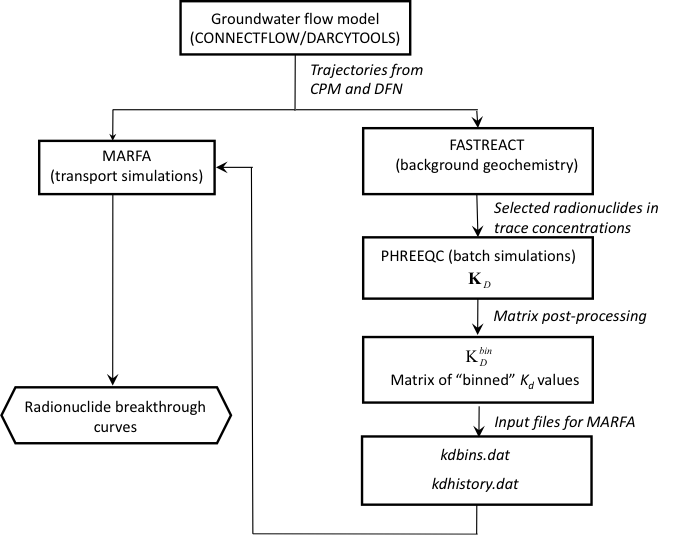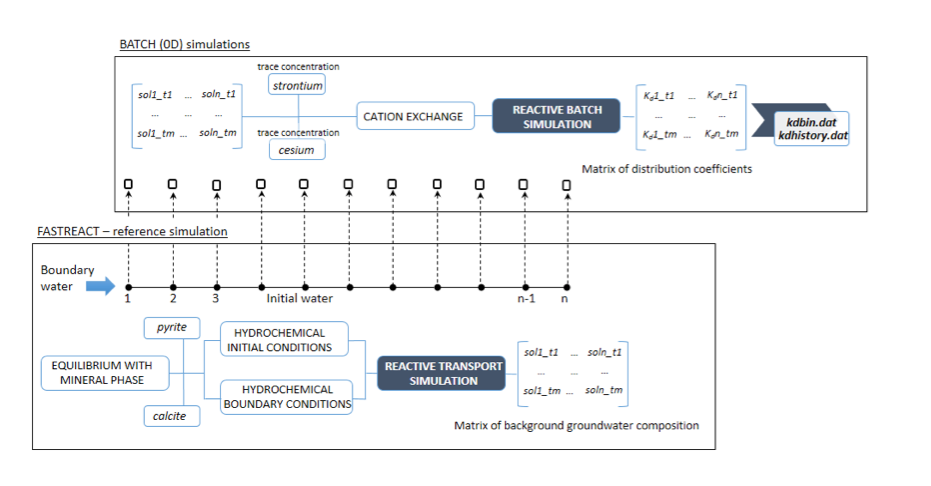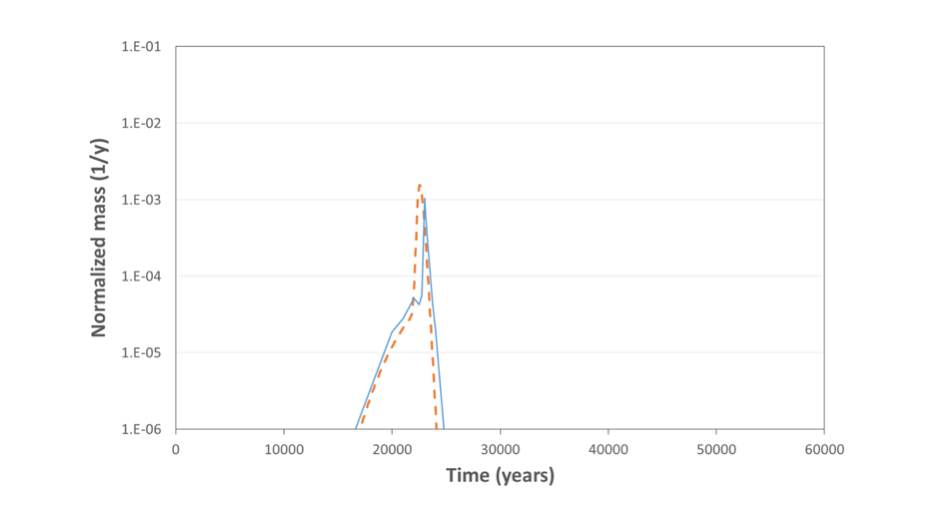- Published on
An “intelligent” Kd approach for the simulation of radionuclide transport in the geosphere - iFM version 2.0
- Authors
Author
- Name
- Paolo Trincheromail

Background and motivation
In performance assessment (PA) studies of nuclear waste repositories, numerical simulations are used to study the potential impact of the release and transport of radionuclides in the near and far field. These simulations are typically carried out using a lumped approach: the different and highly non-linear underlying radionuclide retention processes are represented by a single parameter, the distribution coefficient (Kd), which relates the radionuclide mass retained in the solid phase to its aqueous concentration.
Kd-based simulations, which are particularly appealing due to their numerical efficiency, are mathematically robust but usually rely on an important assumption: the Kd value of each radionuclide is constant in time. This assumption could be critical when geochemical conditions are changing dramatically (e.g. in the transition from temperate to glacial conditions), as distribution coefficients depend on the pH, redox conditions and major chemistry of the system.
We have recently developed and tested a framework (interface to Marfa - iFM) that constitutes a significant improvement over the traditional constant Kd-based models. The basic premise of this approach is that the “background” geochemistry (excluding radionuclides) is first be pre-calculated using a reactive transport code in order to generate a dataset of Kd values in space and time that are representative of the actual geochemical conditions in the considered spatial and temporal domain. This information is then used by the computer code Migration Analysis of Radionuclides in the Far Field (MARFA) [1,2] to calculate radionuclide transport based on these “intelligent” Kd values.

The tool: iFM version 2.0
The figure below shows a workflow of iFM v2.0.

The numerical tool consists of two sets of numerical calculations:
- FASTREACT [3] simulates transport and geochemical reactions along the same set of transport pathwasy used by MARFA. This simulation only accounts for the background geochemistry (without radionuclides).
- PHREEQC batch calculations. At each time step, the background geochemical composition computed along the pathways (previous step) and an arbitrarily low concentration of the considered radionuclide(s) are used to perform zero-dimensional calculations. These batch calculations use a mechanistic description of the relevant sorption processes (e.g. surface complexation, cation exchange, etc) and provide as output quantitative information about the distribution coefficients, Kd, of each radionuclide at each location and at the considered simulation times.
Testing the tool – a synthetic example
To test the robustness of the tool, we have solved a “typical" radionuclide waste performance assessment (PA) problem: the simulation of the migration of radionuclides from a deep geological repository to the surface.
A snapshot of a groundwater velocity field has been taken from an existing regional-scale three-dimensional hydrogeological model. Using particle tracking simulations, a number of transport pathways have been delineated.
Radionuclides have been released during a small time interval compared to the time frame of the problem. Initially, glacial conditions are assumed to prevail in the whole domain. After around 20,000 years, a different and less diluted water, representative of new temperate conditions, enters the model domain from the release boundary and propagates undisturbed along the streamlines.
The numerical exercises have been solved using (1) iFM+MARFA (see Figure below) and (2) FASTREACT.

The strontium breakthrough curves computed using iFM+MARFA and FASTREACT are shown in the Figure below. When strontium is overtaken by the geochemical perturbation, it is mobilized and moves nearly unretarded. Both simulations capture this effect and their results closely match each other. Thus, the verification exercise can be considered successful.

Acknowledgements
This work is a collaborative project between SKB and POSIVA, the organizations in charge of managing nuclear fuel and radioactive waste in Sweden and Finland, respectively. Amphos 21 and Scott Painter want to thank Lasse Koskinen (POSIVA) and Jan-Olof Selroos (SKB) for their support and very helpful comments.
Paolo Trinchero also wants to thank the coauthors of this work: Luis Manuel de Vries, Jorge Molinero and Scott Painter.
References
[1] Painter, S., V. Cvetkovic, J.-O. Selroos, and O. Pensado. (2007). Time domain particle tracking methods for simulating transport with retention and first-order transformation. Water Resources Research 43(9), W01406.
[2] Painter, S., and Mancillas, J. (2013). MARFA User’s manual: migration analysis of radionuclides in the far field, Working Report 2013-01, Posiva Oy.
[3] Trinchero, P., Molinero, J., Román-Ross, G. (2013) A streamline-based approach for the solution of multicomponent reactive transport problems, SKB report R-10-45.